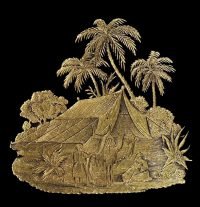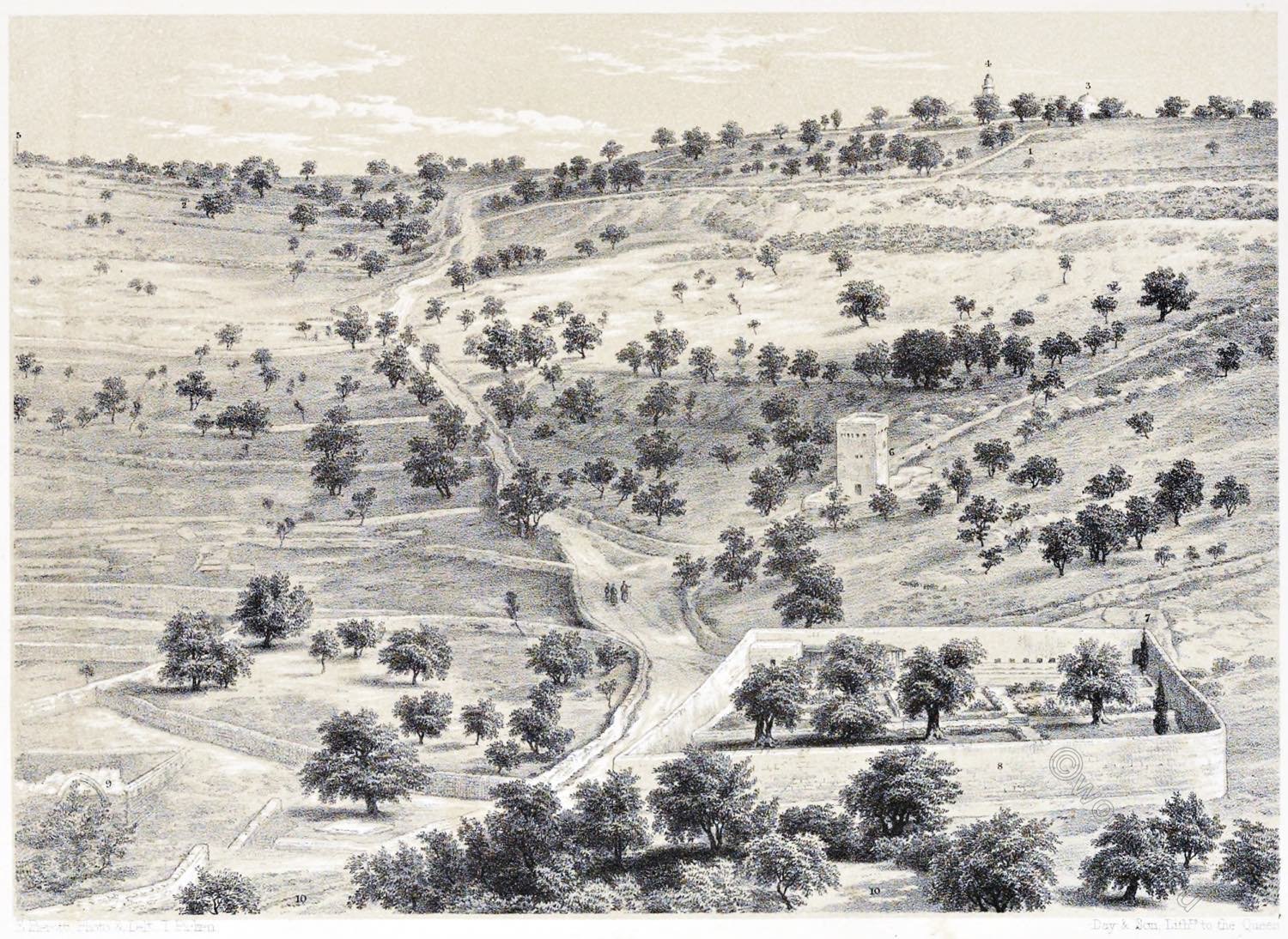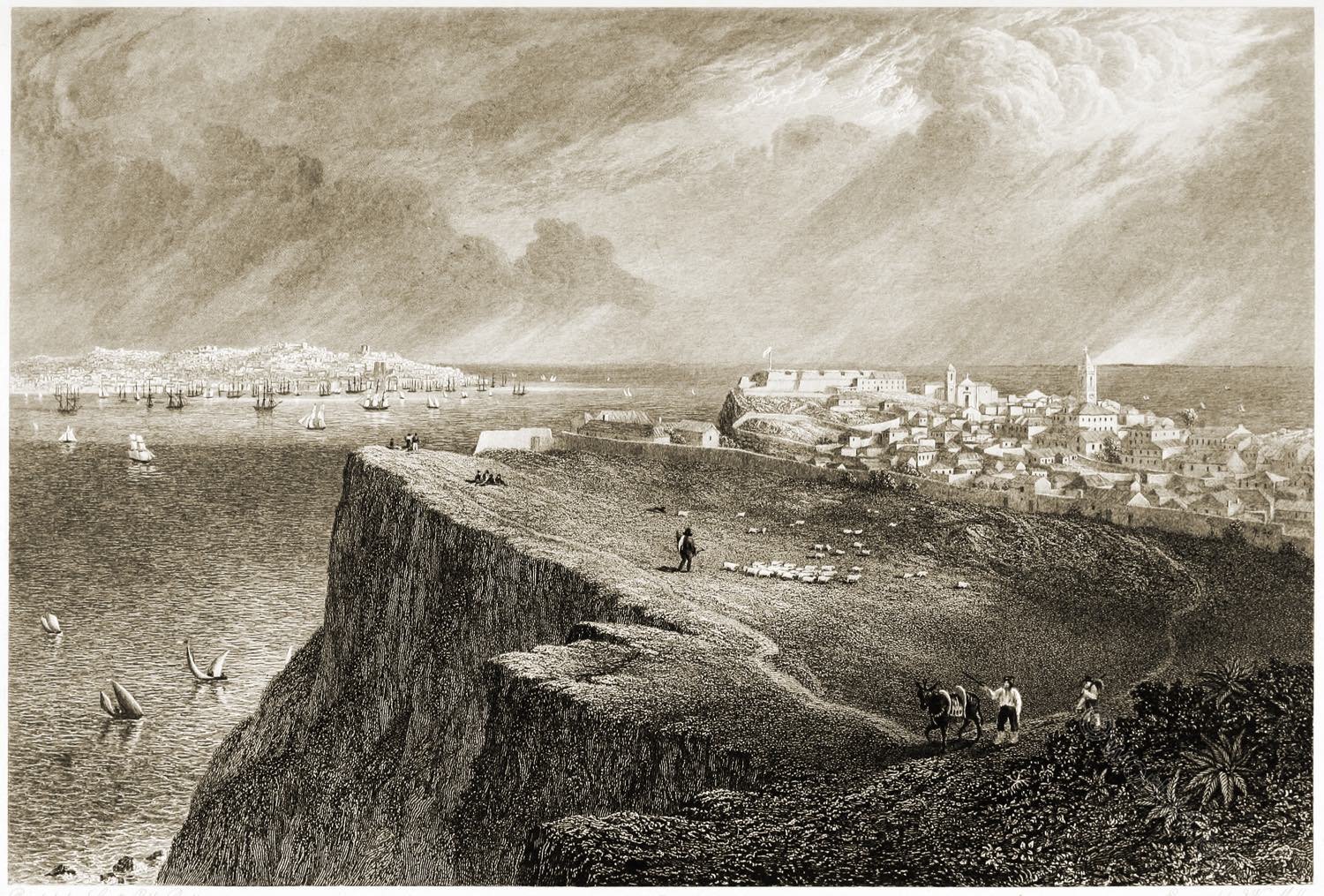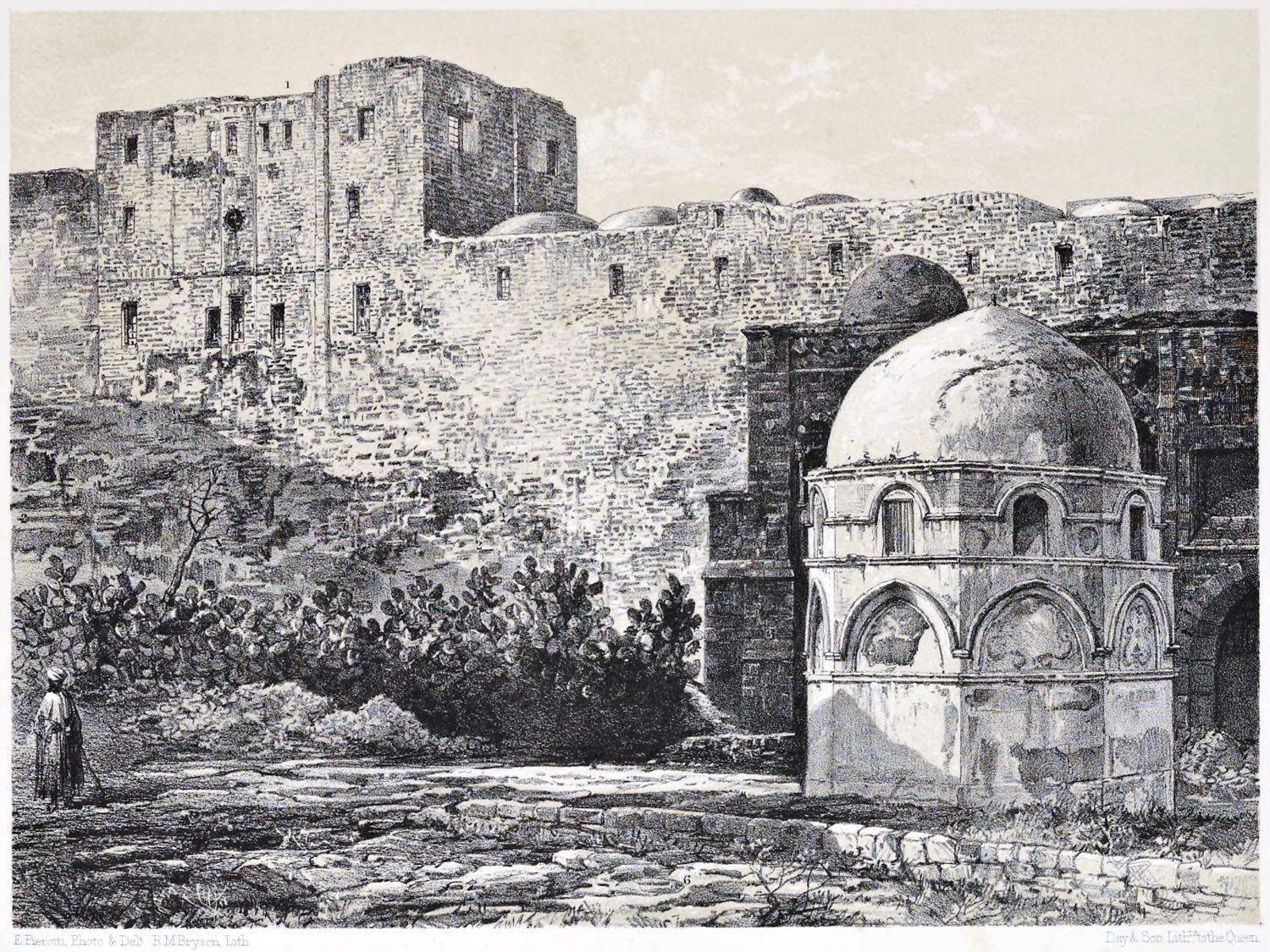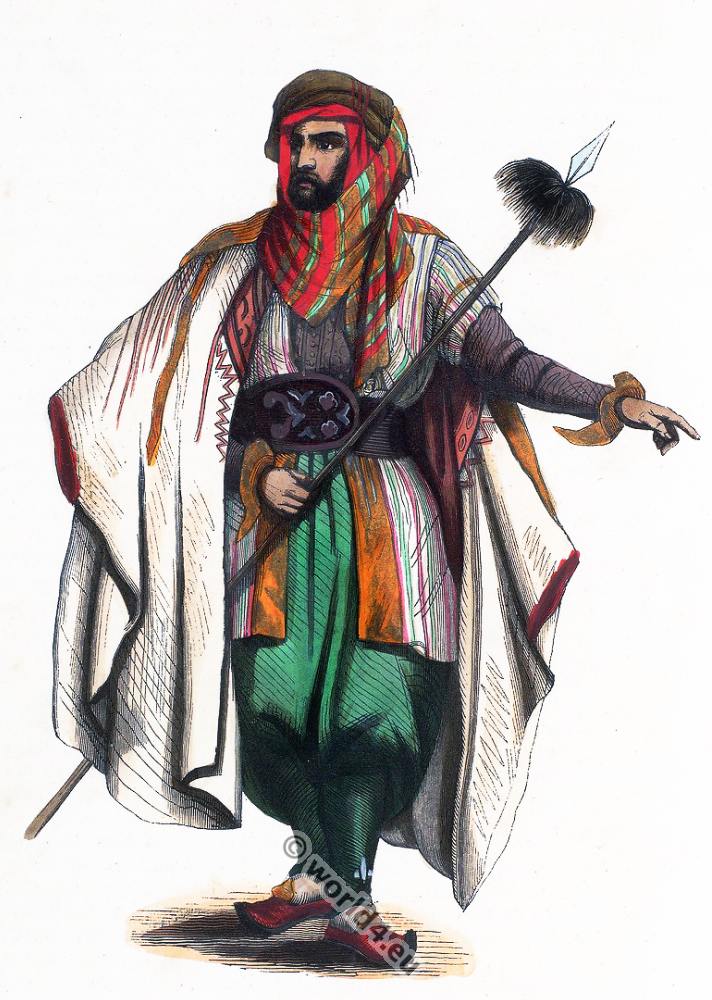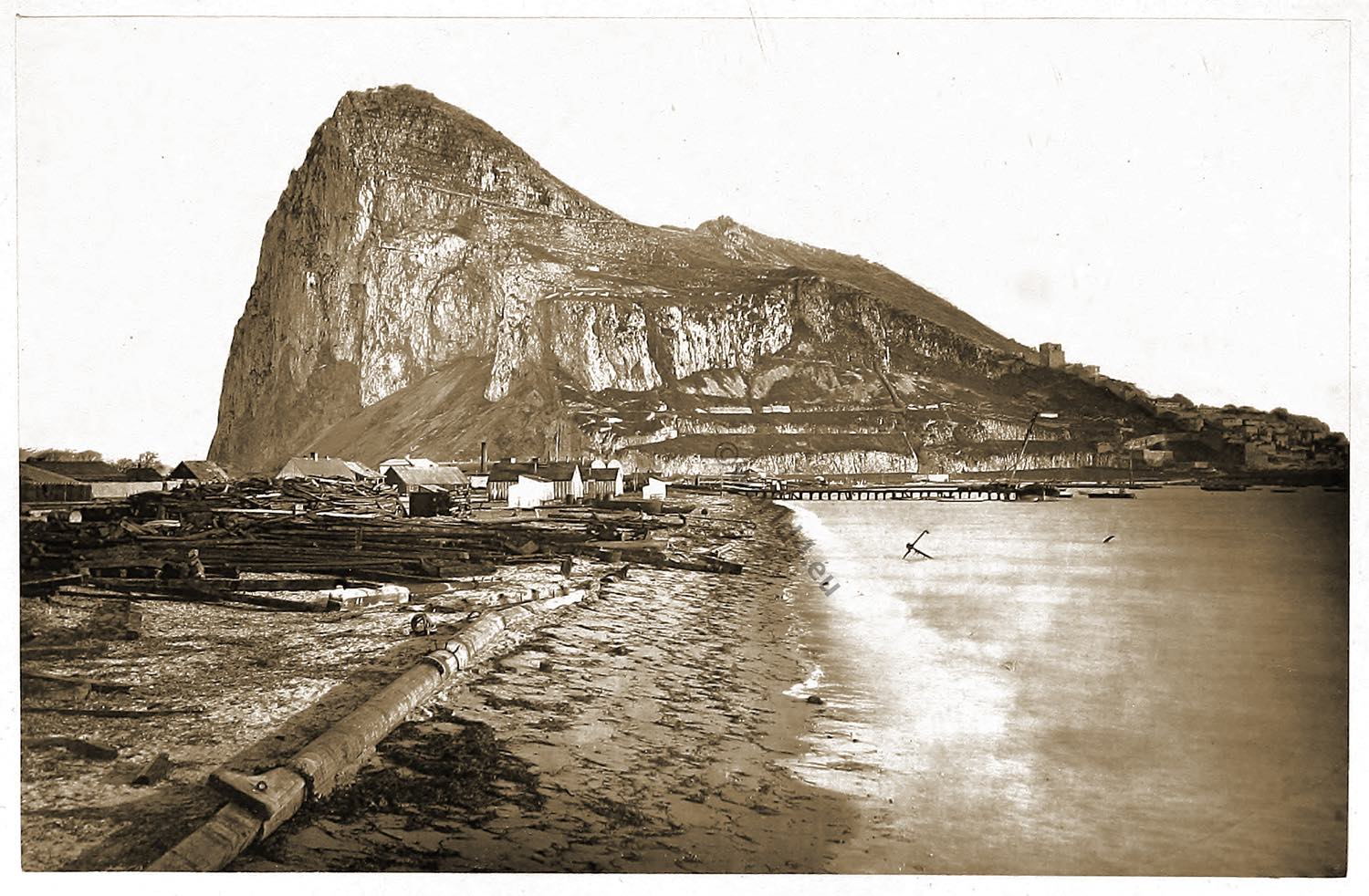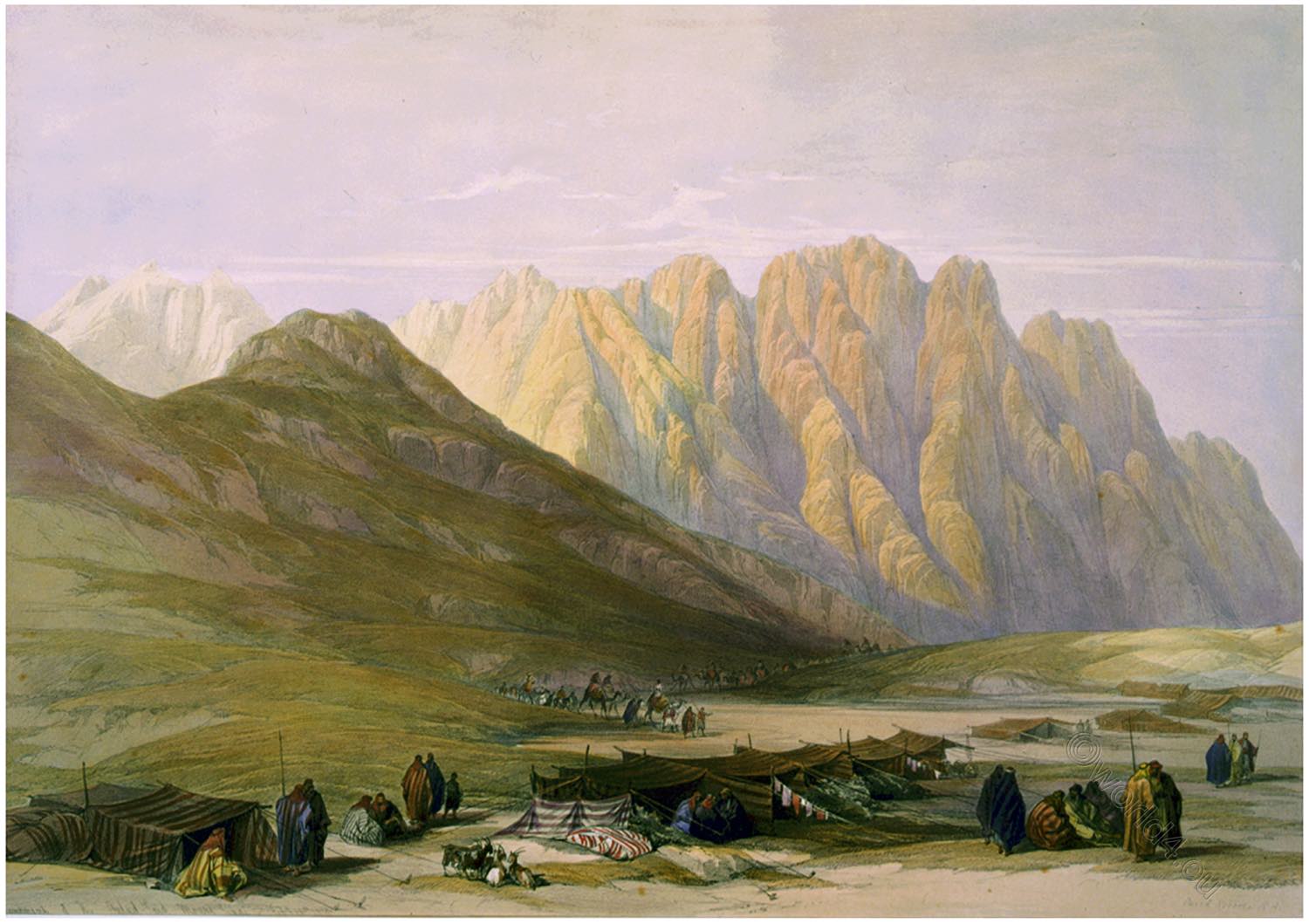
PLATE I.
PANORAMA OF JERUSALEM, SEEN FROM THE MOUNT OF OLIVES.
REFERENCES.
- Hill of Evil Counsel.
- Aqueduct of Solomon.
- Mount of Rephaim.
- Cave of S. Peter’s Repentance.
- Mount Sion.
- Tomb of David.
- Scene of the Last Supper.
- Haram es-Sherif
- Court of the Mosque Kubbet es-Sakha-rah.
- Mosque el-Aksa.
- Kubbet es-Sakharab.
- Jewish Hospital.
- Armenian Convent.
- Church of S. James.
- English Church.
- Castle of David.
- Greek Convent of S. John the Baptist.
- Minaret of Ibrahim’s Mosque.
- The Western Mountains.
- Tower of the Church of the Resurrection.
- Church of the Resurrection.
- Hospice of Saladin.
- Greek Convent of S. Basil.
- Latin Convent of S. Saviour.
- Minaret of the Serai.
- Tekhie el-Kasyeki Sultane.
- Residence of the Governor of Jerusalem
- Barrack of the Haram es-Sherif.
- A building belonging to the Daughters of Sion.
- Minaret. The ancient Palace of Herod.
- Church of S. Ann.
- Mount Gihon.
- Convent of the Dancing Dervishes.
- Herod’s Gate.
- Ancient Church of S. Mary Magdalene.
- Bastion of Godfrey of Bouillon.
- Kerm es-Sheikh.
- S. Mary’s Gate.
- Saracenic Ruin.
- Golden Gate.
- Cemetery.
- Way of the Capture.
- Valley of the Kidron.
- Place where S. Stephen was stoned (?).
- Gethsemane.
- Arab Tower.
- Tomb of Absalom.
- Mount of Offence.
- Tomb of the Virgin Mary.
- Mount of Olives.
Source: Jerusalem Explored. Being a description of the ancient and modern city, with numerous illustrations consisting of views, ground plans, and sections by Ermete Pierotti; translated by Thomas George Bonney (Fellow of St Johns College, Cambridge). London: Bell and Daldy; Cambridge: Deighton, Bell and Co. 1864.
Continuing
Discover more from World4 Costume Culture History
Subscribe to get the latest posts sent to your email.

